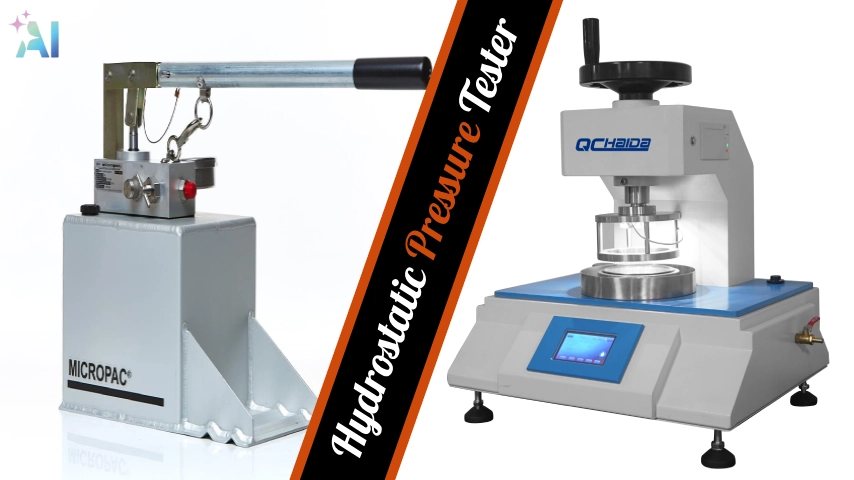Hydrostatic pressure testing is a crucial process used across various industries to ensure the safety and integrity of pressure-bearing equipment. It’s a method that helps prevent catastrophic failures and protects both people and the environment. Let’s dive into the world of hydrostatic pressure testers and explore how they work, why they’re important, and what you need to know about them.
Introduction
Imagine filling a water balloon to its bursting point. That’s essentially what hydrostatic pressure testing does, but with much more precision and purpose. It’s a way to check if pipes, tanks, and other containers can handle the pressure they’re designed for without leaking or breaking.
Hydrostatic pressure testing involves filling equipment with water (or sometimes oil) and pressurizing it beyond its normal operating limits. This process helps identify weak spots, leaks, or potential failures before they become dangerous in real-world use. It’s like giving your equipment a stress test to make sure it’s up for the job.
This testing method is vital in industries where safety is paramount, such as oil and gas, manufacturing, and even in your local fire department. It ensures that the equipment we rely on daily can withstand the pressures it’s meant to handle, preventing accidents and protecting both workers and the environment.
What is a Hydrostatic Pressure Tester?
A hydrostatic pressure tester is the tool that makes all this possible. Think of it as a super-powered pump with a very accurate pressure gauge. It’s designed to push water into equipment at specific pressures and measure how well that equipment holds up.
Basic components
The main parts of a hydrostatic pressure tester include:
- A pump to generate pressure
- Pressure gauges to measure the applied pressure
- Valves to control the flow of water
- Hoses and fittings to connect to the equipment being tested
- A reservoir to hold the test fluid
Working principle
The tester works by slowly increasing the pressure inside the equipment being tested. It’s like inflating a tire, but with much more precision and to much higher pressures. The pressure is held for a set time, and the tester monitors for any drops in pressure or visible leaks.
Applications
Hydrostatic pressure testing isn’t just for one type of industry. It’s used across a wide range of fields where pressure-containing equipment is critical.
Industries that use hydrostatic pressure testing
- Oil and gas: Testing pipelines and storage tanks
- Manufacturing: Checking pressure vessels and hydraulic systems
- Aerospace: Ensuring fuel tanks and hydraulic lines are safe
- Fire safety: Testing fire extinguishers and sprinkler systems
- Plumbing: Verifying the integrity of water and gas lines
Specific equipment tested
- Pipelines and piping systems
- Pressure vessels and tanks
- Boilers and heat exchangers
- Gas cylinders and compressed air systems
- Hydraulic hoses and fittings
Types of Hydrostatic Pressure Testers
Not all hydrostatic pressure testers are created equal. They come in different types to suit various testing needs and environments.
1. Manual testers
These are the simplest type. They require an operator to manually pump up the pressure and monitor the gauges. They’re often portable and good for small-scale testing or field work.
2. Semi-automatic testers
These testers automate part of the process, like maintaining a steady pressure, but still need some human oversight. They’re a good middle ground between manual and fully automatic systems.
3. Fully automatic testers
The most advanced type, these testers can run the entire test process with minimal human intervention. They’re ideal for high-volume testing or when consistent, repeatable results are crucial.
How Does Hydrostatic Pressure Testing Work?
Let’s break down the process step-by-step to understand how hydrostatic pressure testing is actually performed.
Step-by-step process
- Preparation: The equipment to be tested is thoroughly cleaned and inspected.
- Filling: The equipment is filled completely with water, making sure to remove all air.
- Pressurization: The tester slowly increases the pressure to the specified test level.
- Hold period: The pressure is maintained for a set time, usually several minutes to hours.
- Inspection: Technicians check for leaks, deformations, or pressure drops.
- Depressurization: The pressure is slowly released.
- Final check: The equipment is inspected again for any signs of damage or permanent deformation.
Key parameters measured
During the test, several key factors are monitored:
- Test pressure: Usually 1.5 times the maximum allowable working pressure
- Hold time: How long the pressure is maintained
- Pressure drop: Any unexpected decrease in pressure during the hold time
- Visual inspection: Checking for visible leaks or deformations
Benefits of Hydrostatic Pressure Testing
Why go through all this trouble? The benefits of hydrostatic pressure testing are significant and far-reaching.
Safety assurance
First and foremost, it’s about safety. By identifying weak points or potential failures before equipment is put into service, hydrostatic testing prevents accidents that could harm people or the environment.
Quality control
It’s also a crucial quality control measure. Manufacturers use hydrostatic testing to ensure their products meet design specifications and industry standards. This helps build trust with customers and maintains a company’s reputation.
Regulatory compliance
Many industries have strict regulations requiring regular hydrostatic testing. Complying with these rules isn’t just about avoiding fines—it’s about being a responsible business that prioritizes safety and quality.
What Are the Key Features to Look for in a Tester?
If you’re in the market for a hydrostatic pressure tester, here are some key features to consider:
Pressure range and accuracy
Make sure the tester can reach the pressures you need for your specific applications. Accuracy is crucial—look for testers with high-precision gauges.
Testing capacity
Consider the size and volume of the equipment you’ll be testing. Some testers are designed for small items like fire extinguishers, while others can handle large pipelines.
Automation level
Decide how much automation you need. Fully automatic testers are great for high-volume testing, but manual testers might be more cost-effective for occasional use.
Data recording and analysis capabilities
Modern testers often come with digital data logging and analysis tools. These can be invaluable for maintaining records and spotting trends over time.
Standards and Regulations
Hydrostatic pressure testing isn’t a free-for-all—there are specific standards and regulations that govern how it’s done.
ASTM standards
The American Society for Testing and Materials (ASTM) provides detailed guidelines for hydrostatic testing across various industries.
ASME codes
The American Society of Mechanical Engineers (ASME) has specific codes for pressure vessels and boilers that include hydrostatic testing requirements.
Industry-specific regulations
Different industries may have their own regulations. For example, the Department of Transportation has specific rules for testing gas cylinders.
Limitations and Considerations
While hydrostatic pressure testing is incredibly useful, it’s not without its limitations.
Potential risks
There’s always a small risk of equipment failure during testing, which is why proper safety procedures are crucial.
Material compatibility issues
Some materials may react differently to water than to the fluids they’re designed to contain. This can affect test results or even damage the equipment.
Environmental concerns
Proper disposal of test water is important, especially if it contains any contaminants from the equipment being tested.
Maintenance and Calibration
To ensure accurate and reliable results, hydrostatic pressure testers need regular care.
Regular maintenance procedures
This includes checking for wear on pumps, hoses, and fittings, as well as keeping the equipment clean and properly stored.
Calibration requirements and frequency
Pressure gauges need regular calibration to maintain accuracy. The frequency depends on usage but is typically annually or semi-annually.
Conclusion
Hydrostatic pressure testing is a critical process that helps keep our world safe and functioning. From the pipelines that transport fuel to the fire extinguishers in our buildings, this testing ensures that pressure-bearing equipment can handle its job without fail.
As technology advances, we’re likely to see even more precise and automated hydrostatic pressure testers. These might include real-time data analysis, AI-assisted testing procedures, and even more environmentally friendly testing methods.
Understanding hydrostatic pressure testers isn’t just for engineers or technicians. It’s about appreciating the unseen processes that keep our infrastructure safe and reliable. The next time you see a pipeline or a pressure vessel, remember the rigorous testing it went through to ensure it can handle the pressure—literally.






You have brought up a very good details, appreciate it for the post.